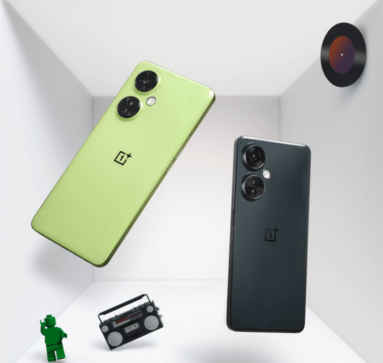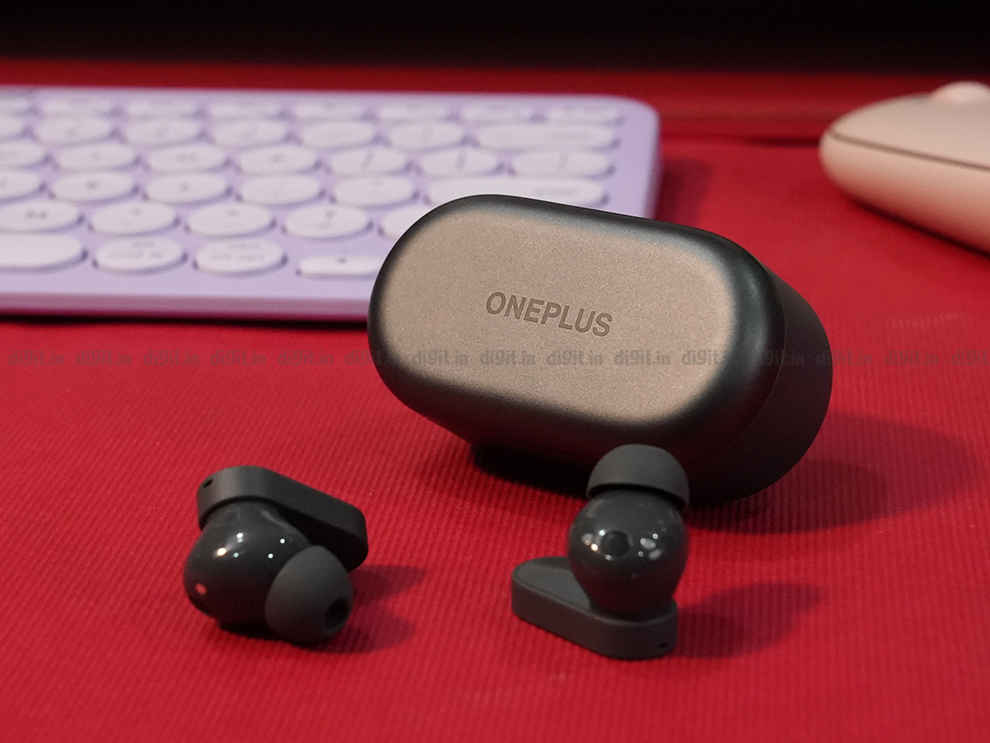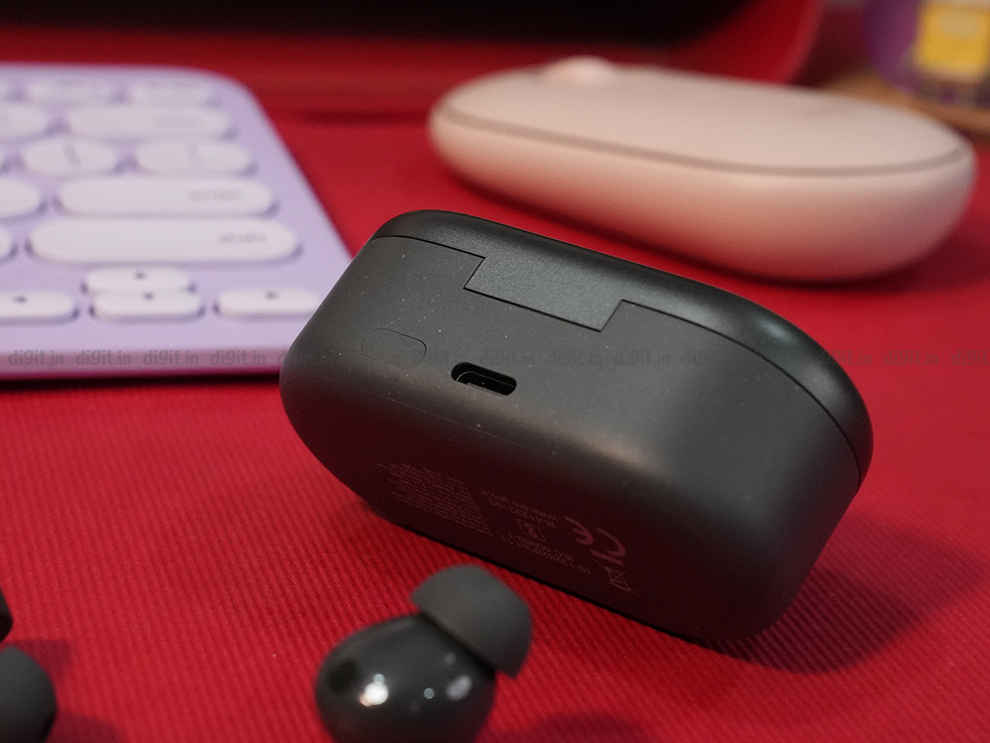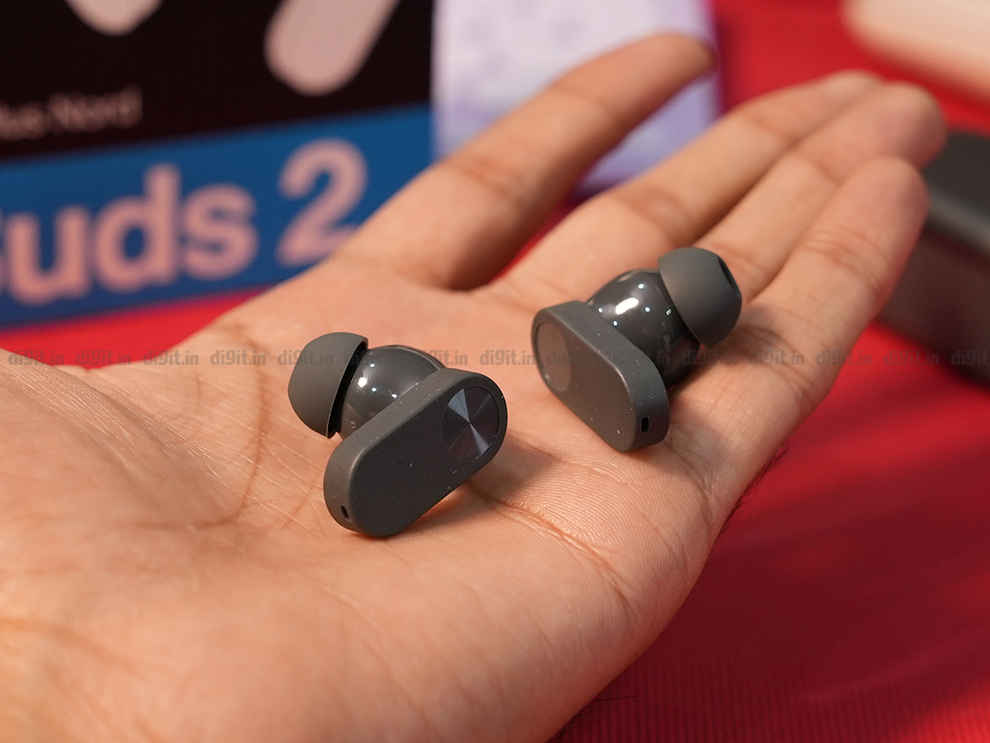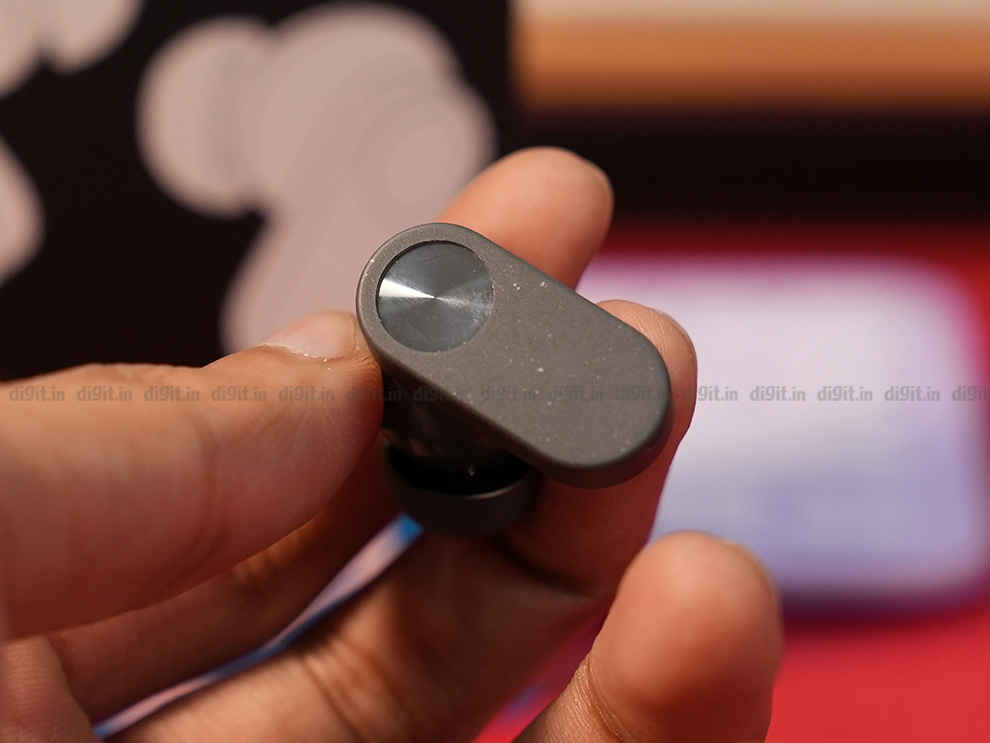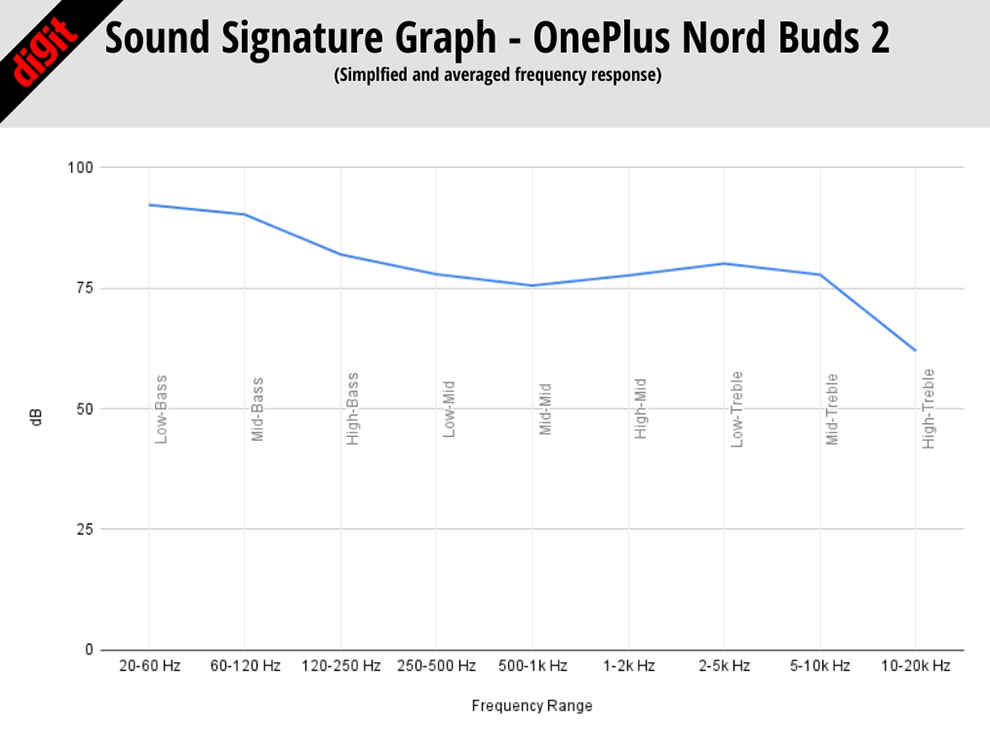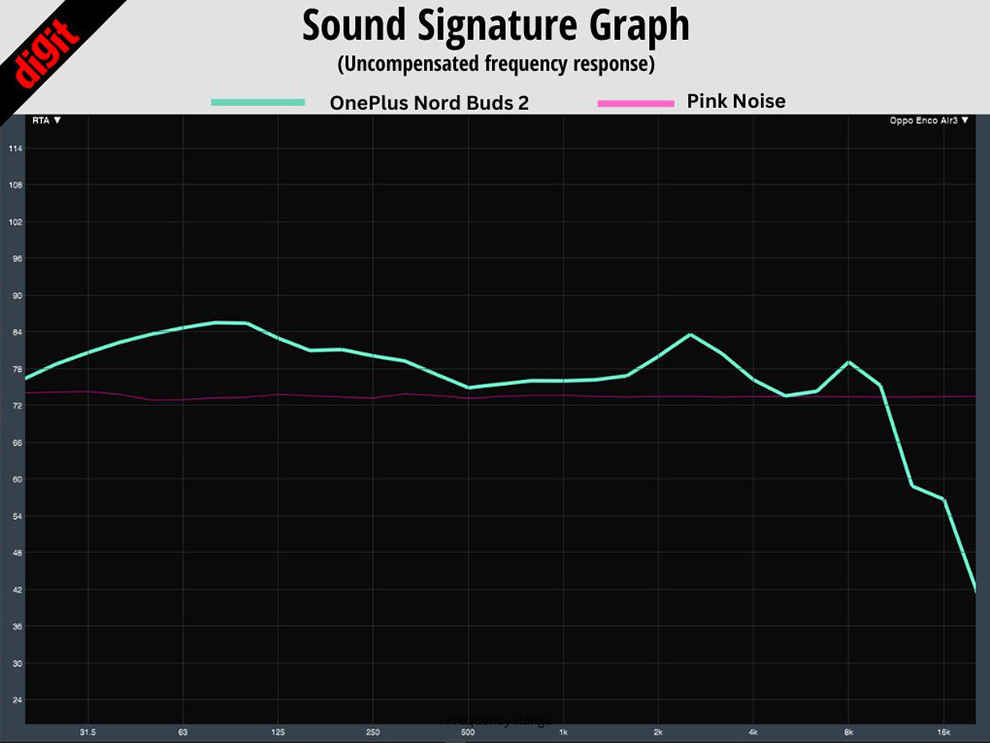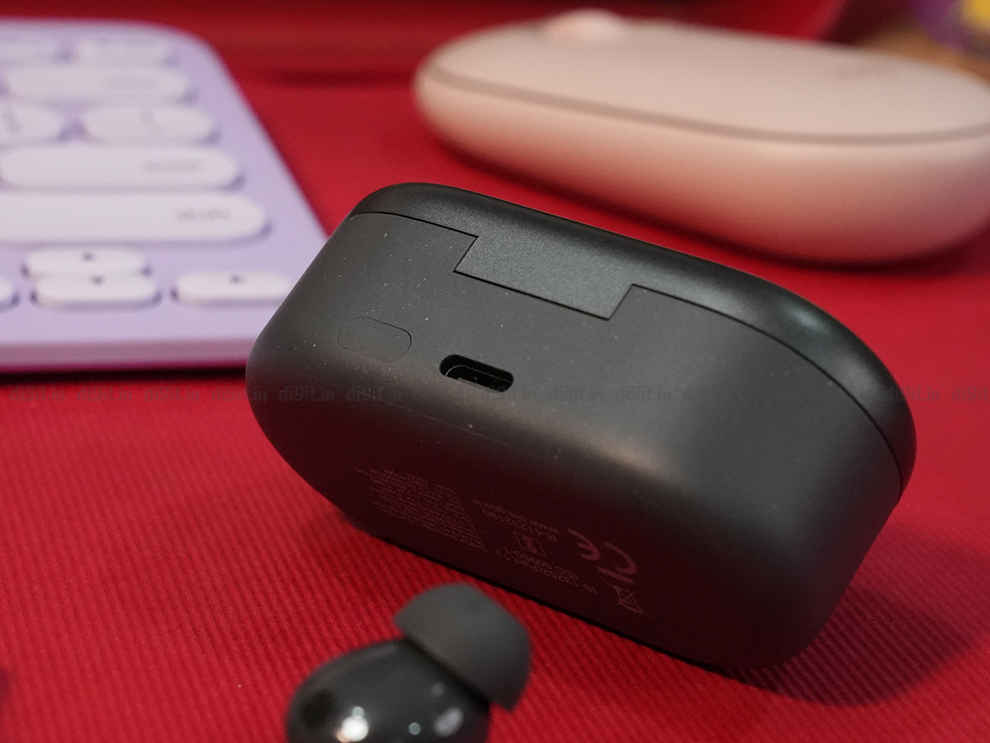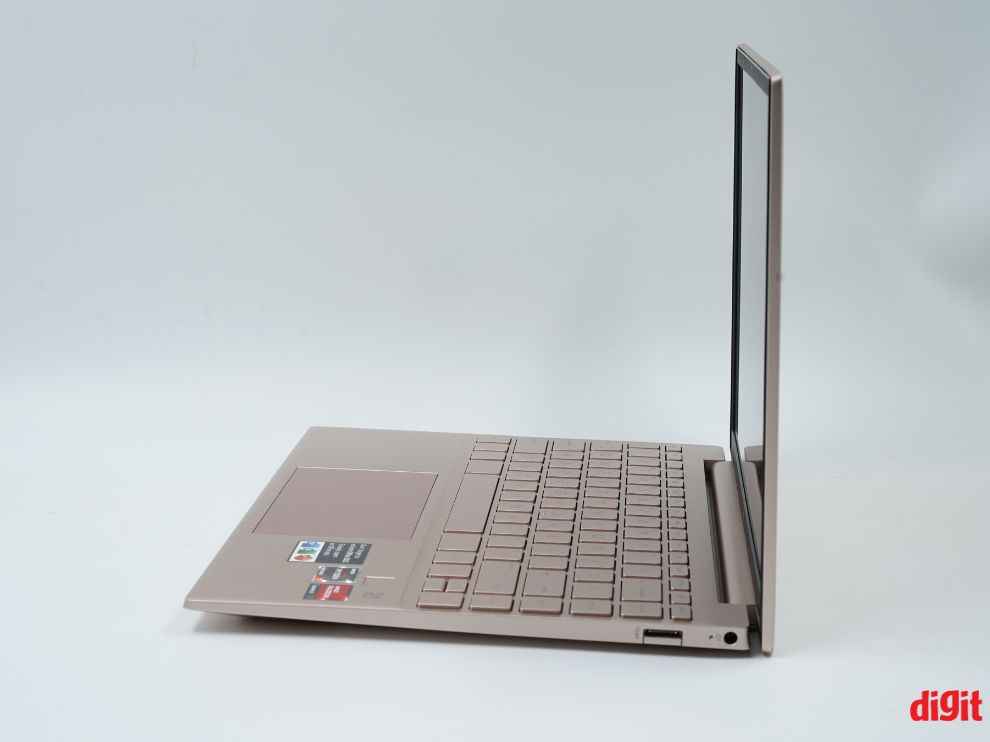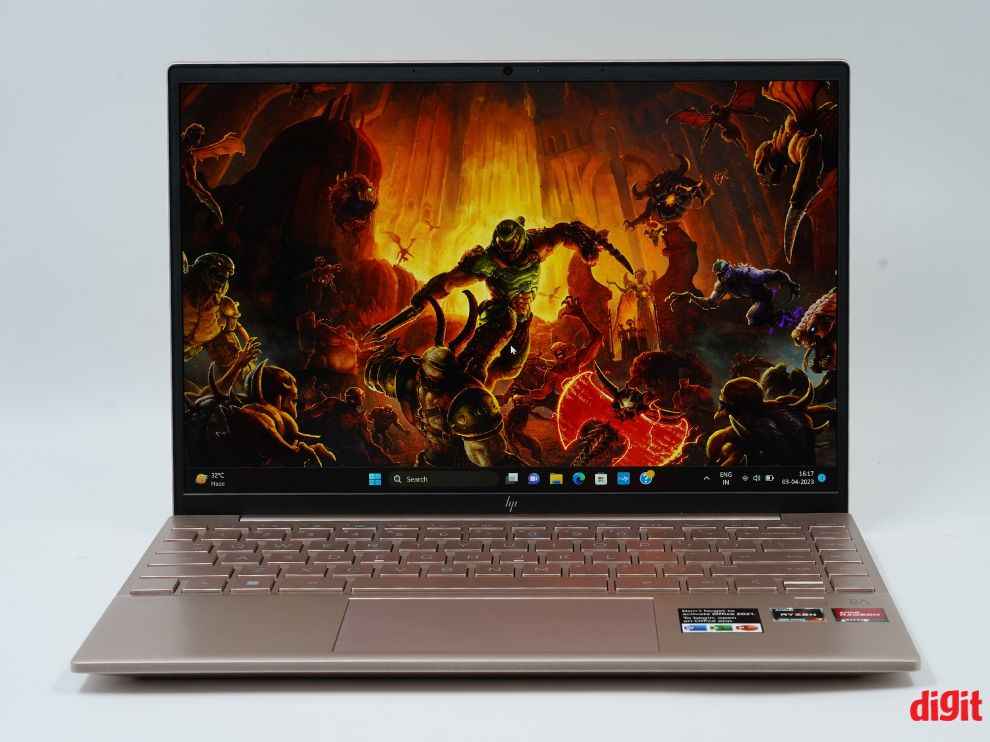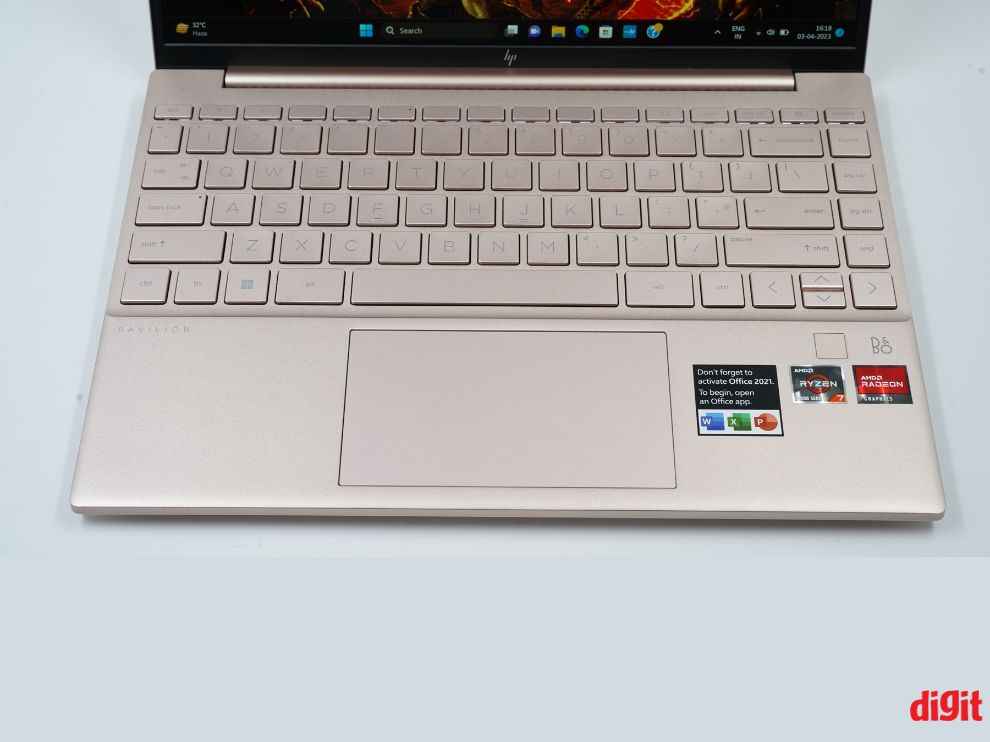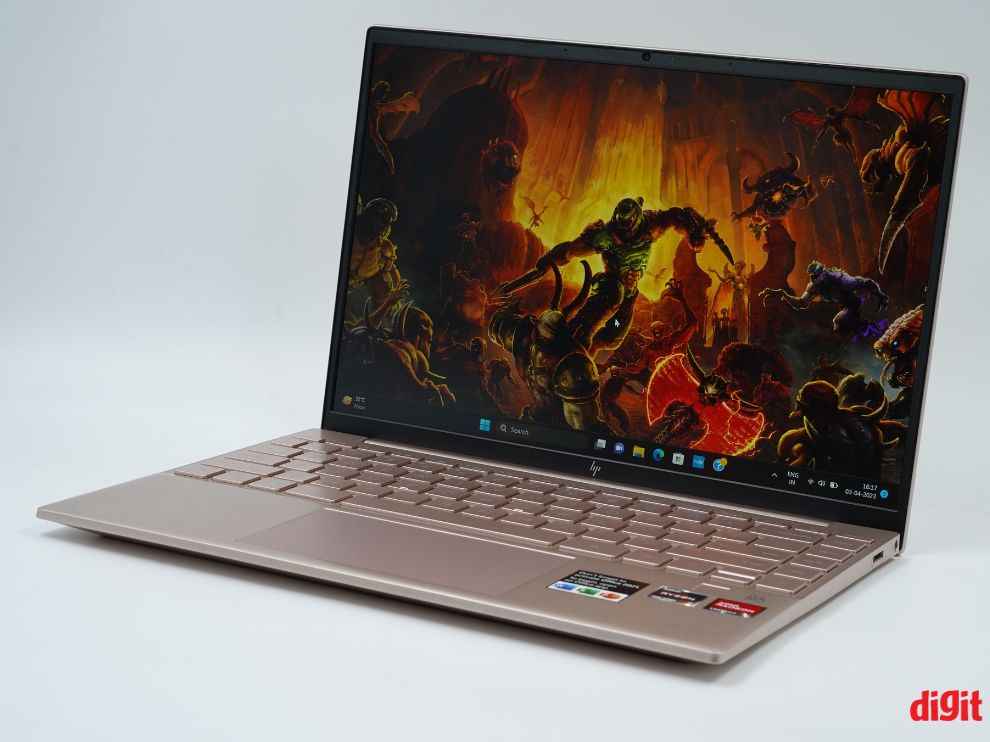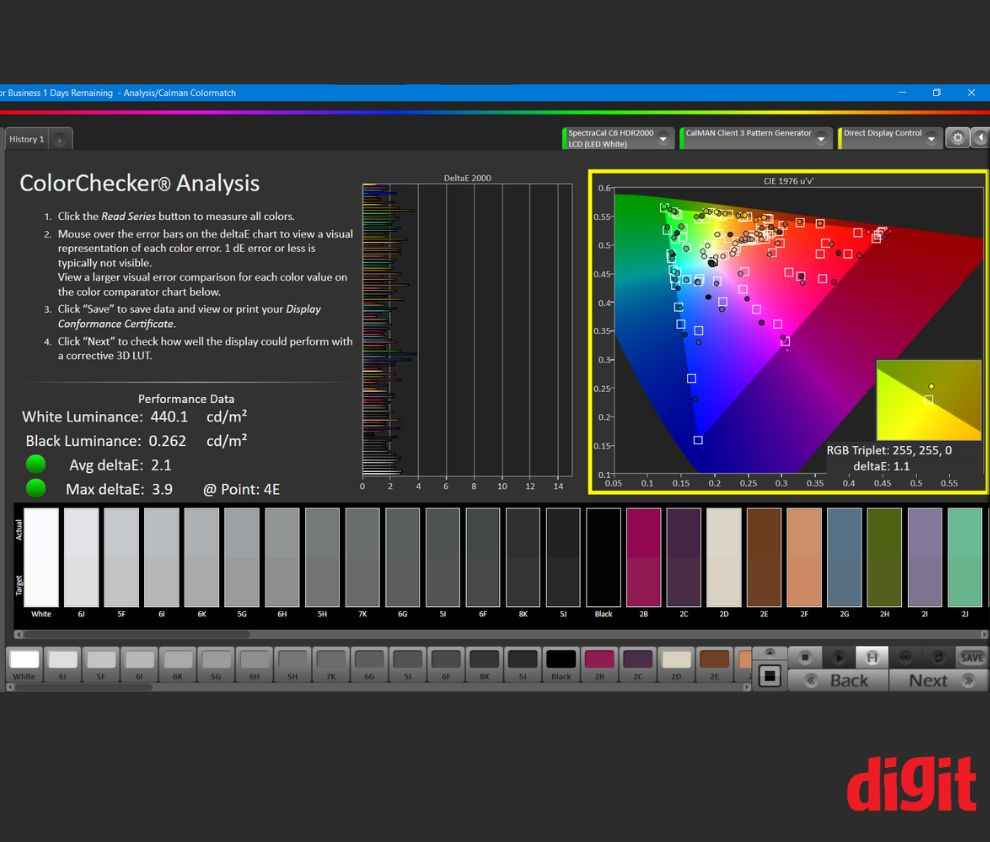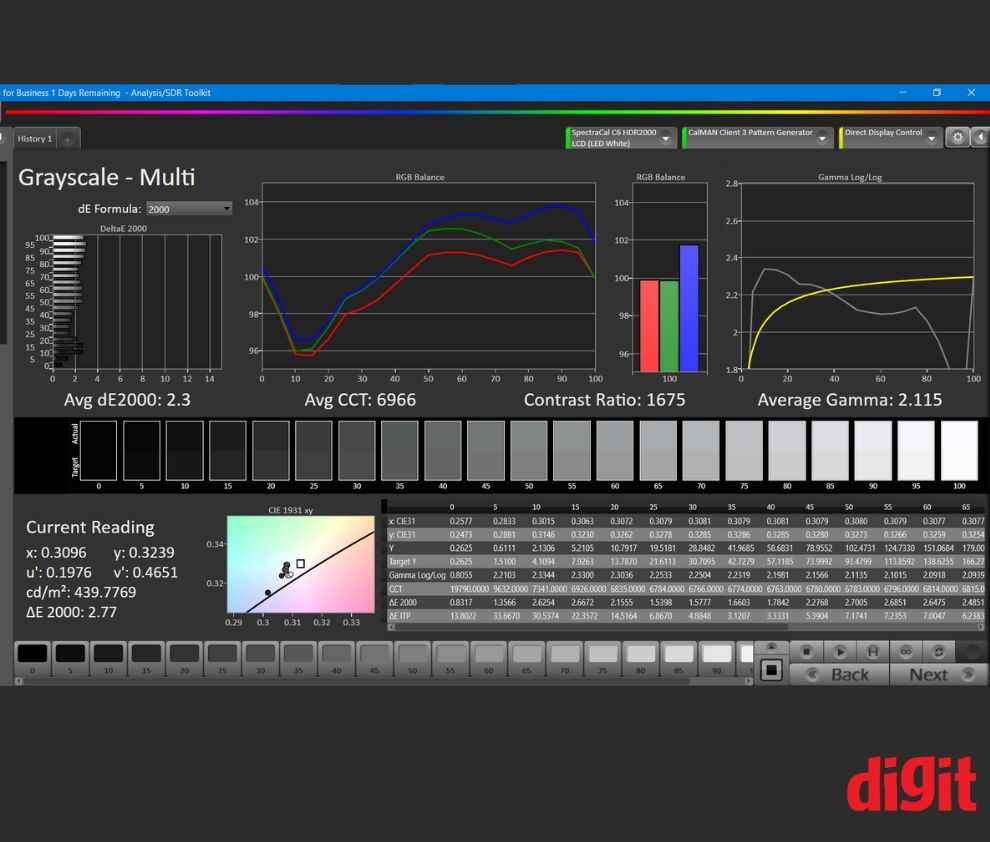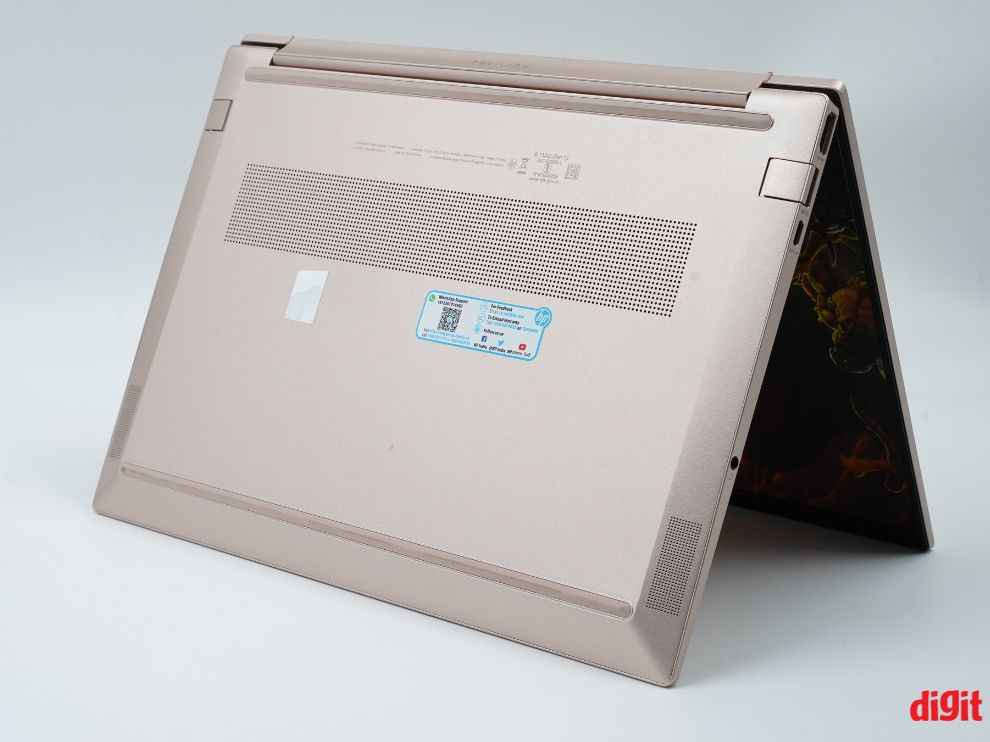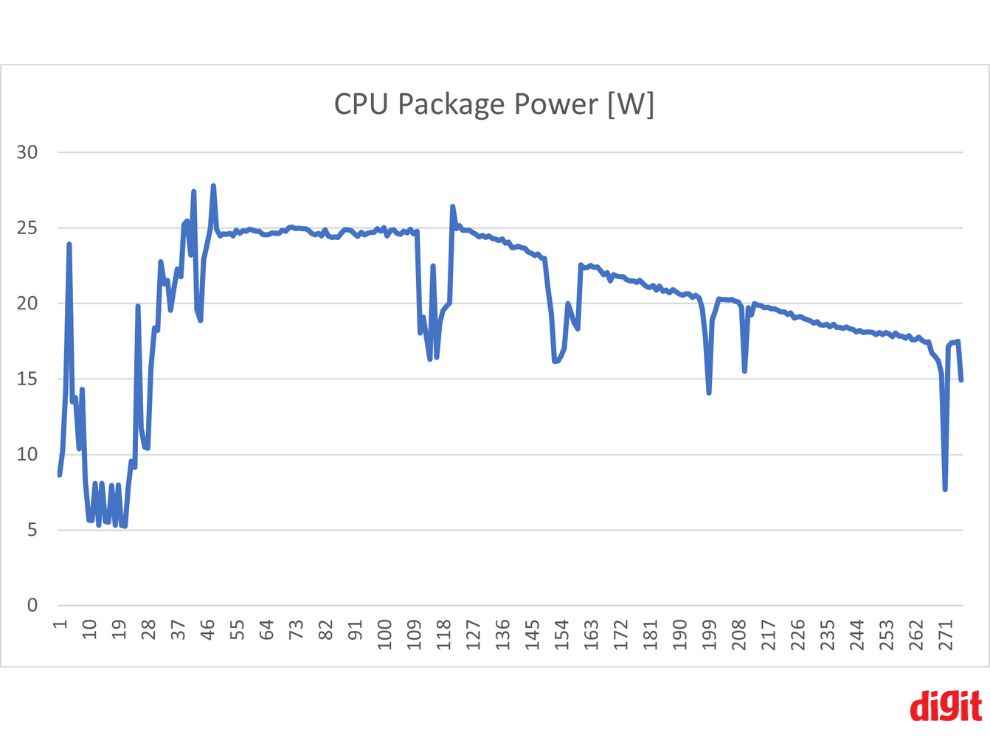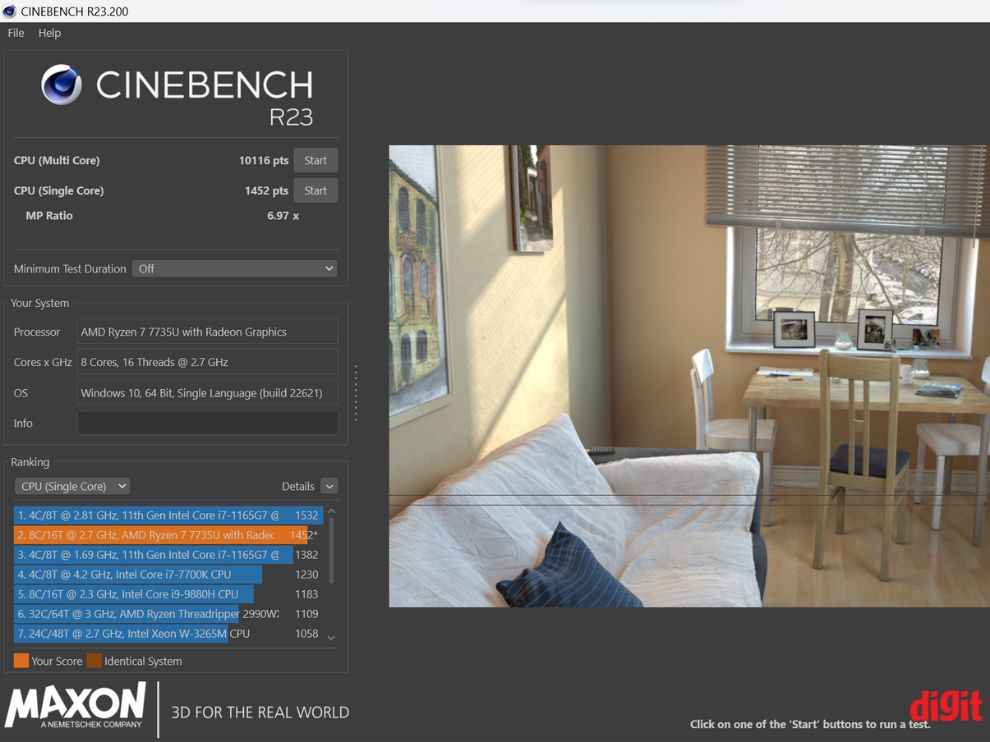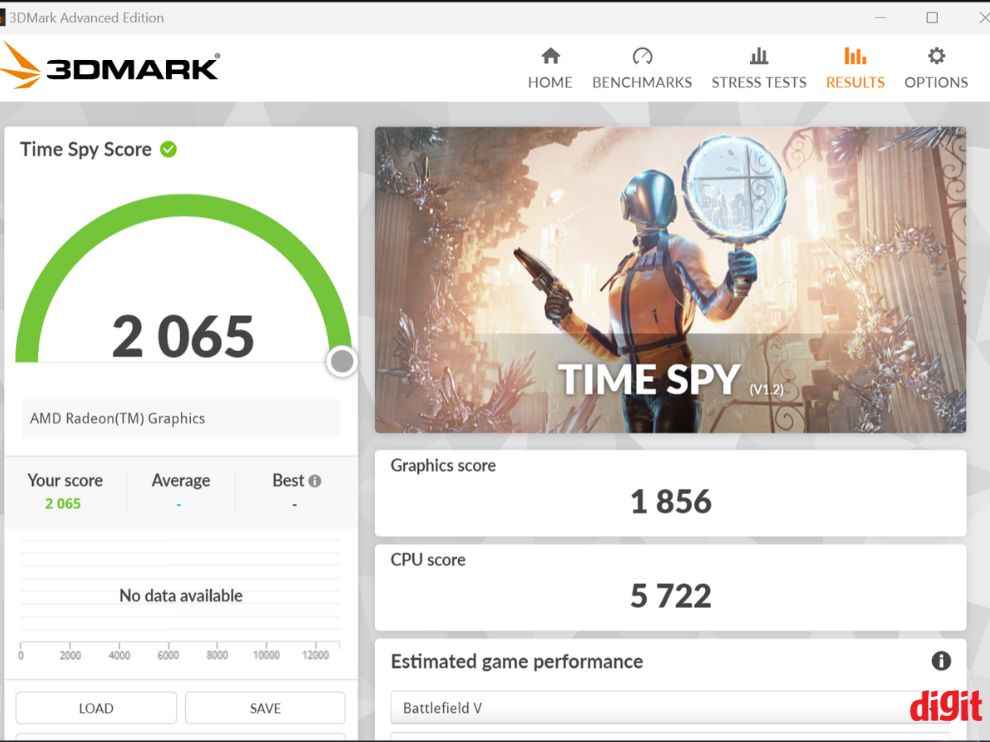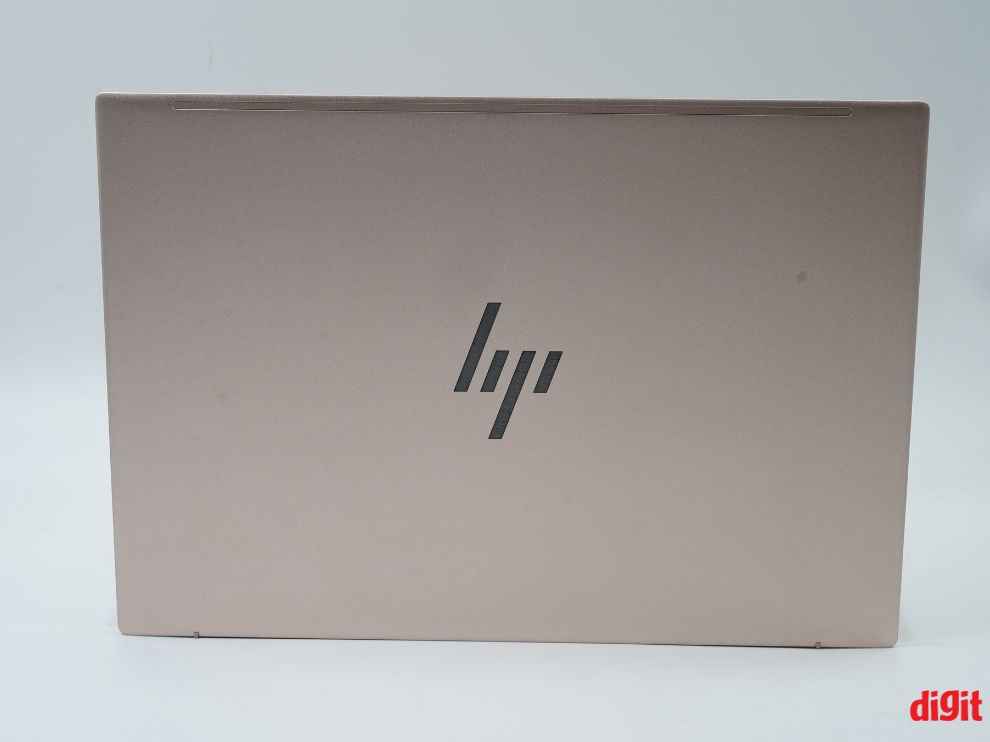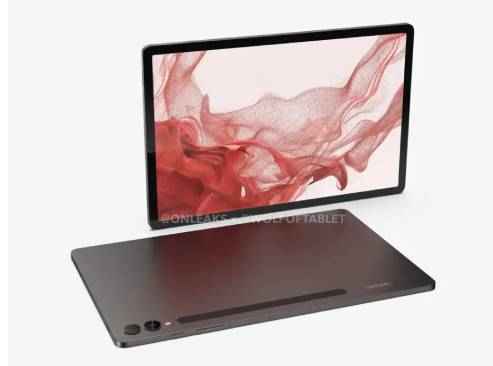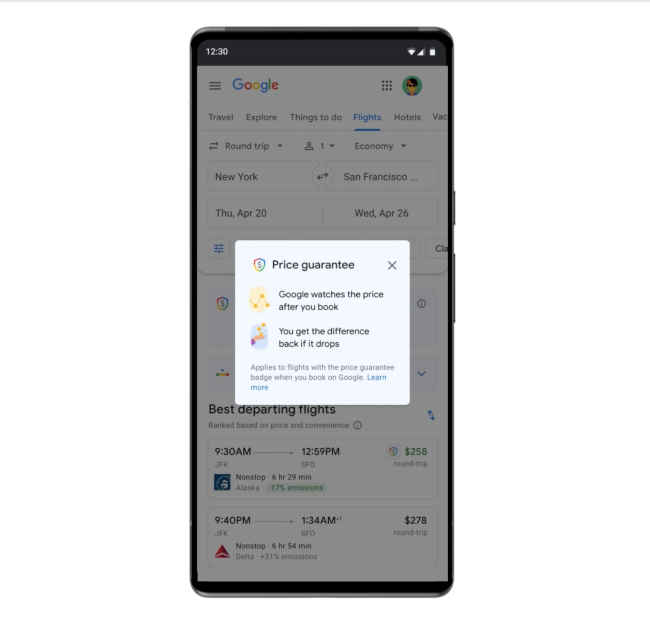There’s no denying the finesse of the Samsung Galaxy A34 5G – it does a couple of things well, and it generally does it better than most at this price. The key highlights of the Samsung Galaxy A34 are its gorgeous, premium design and its bright Super AMOLED display. The design is, simply put, classy. It exudes a premium air, that very few do at this price. The display, on the other hand, is simply the brightest we’ve ever tested at this price with solid viewing angles and good colour. However, there are some misses as well, where its competition takes the lead.
The Samsung Galaxy A mid-range series has undergone its yearly refresh and the company launched two compelling options this year – Galaxy A34 5G and Galaxy A54 5G. Both come with their own set of upgrades over their predecessors. The Galaxy A34 – which I reviewed – looks like an excellent bang for the buck offer with upgrades such as a new design language, faster refresh rate, a newer processor, and upgraded RAM. The mid-range segment is quite saturated in India, given the sheer number of launches happening. Does it manage to make a splash in this segment when compared to popular devices such as iQOO Neo 7 (review), POCO X5 Pro (review), Google Pixel 6a (review), Nothing Phone (1) (review), and Redmi Note 12 Pro+? Let’s find out.
Samsung Galaxy A34 5G Review: Build and design
There’s a certain amount of care and attention to detail that’s gone into making the Samsung Galaxy A34 5G that’s rare to find in mid-range phones, save for perhaps, the Nothing Phone (1). While the Nothing Phone (1) focuses more on sporting a unique look, the Samsung Galaxy A34 attempts to ape the design language of the company’s flagship S23 series lineup. And, it is successful to quite an extent.
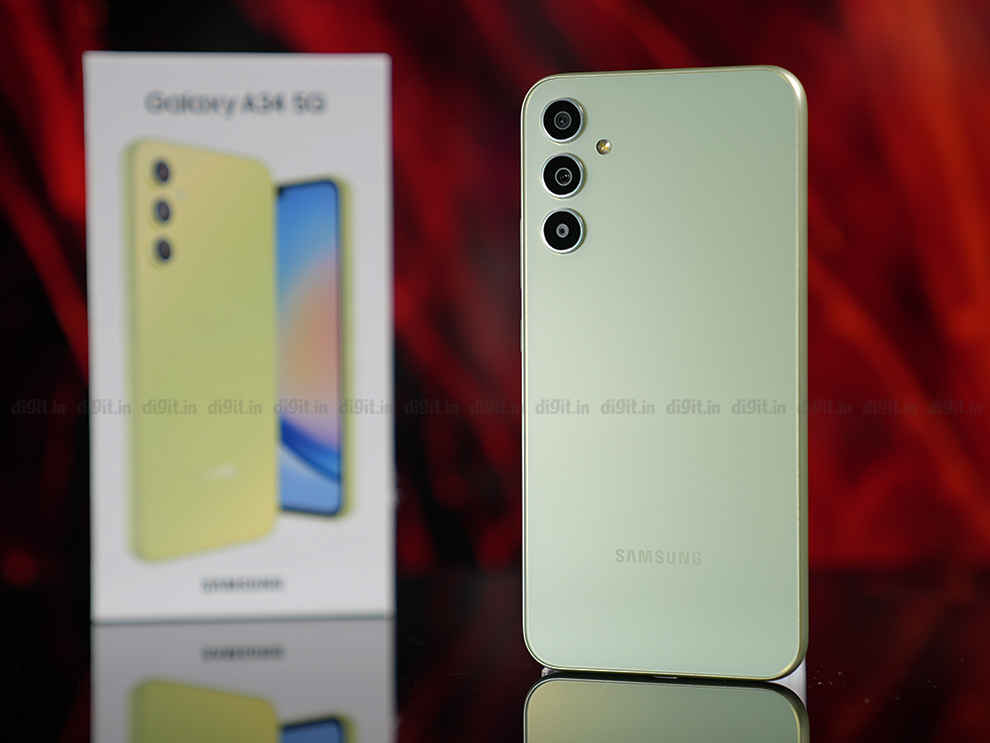
The phone’s back panel is classy, understated, and almost identical to that of the Samsung Galaxy S23 (review) and S23+. The camera island is gone and the three rear cameras feature silver metallic rings outlining them, which makes the design of the Galaxy A34 much more elevated. The back is made of plastic and it resists fingerprints with ease, however, the rear panel does get smudged with oily hands. The sides have a metallic sheen to them but they are also made out of plastic. Despite the plastic construction, at no point does the Galaxy A34 feel cheap – in fact, the in-hand feel is quite the opposite of cheap.
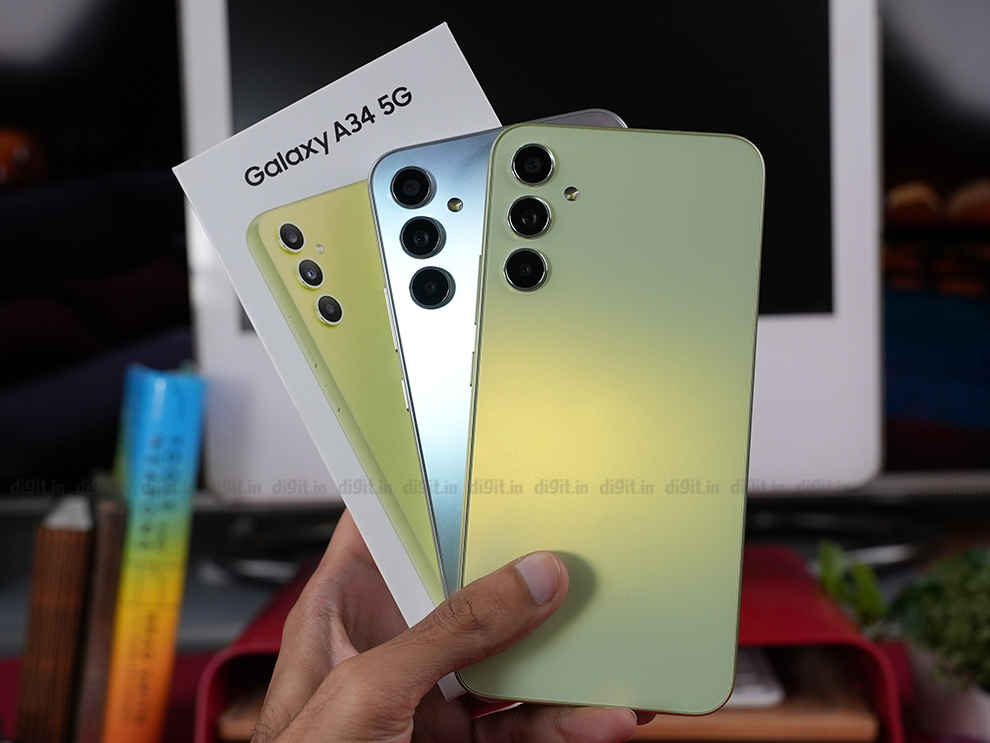
The Galaxy A34 weighs 199 g and is 8.2 mm thick, so it is definitely not the leanest smartphone at this price – but the weight of the phone is well-balanced throughout its body and it is quite comfortable to hold. The right side features the power and volume buttons – these are quite tactile and well-built. The top features the SIM tray while the bottom houses the USB C charging port and a speaker. The phone is also IP67 rated, meaning it is protected from elements such as dust and water (1 m deep water for up to 30 minutes).
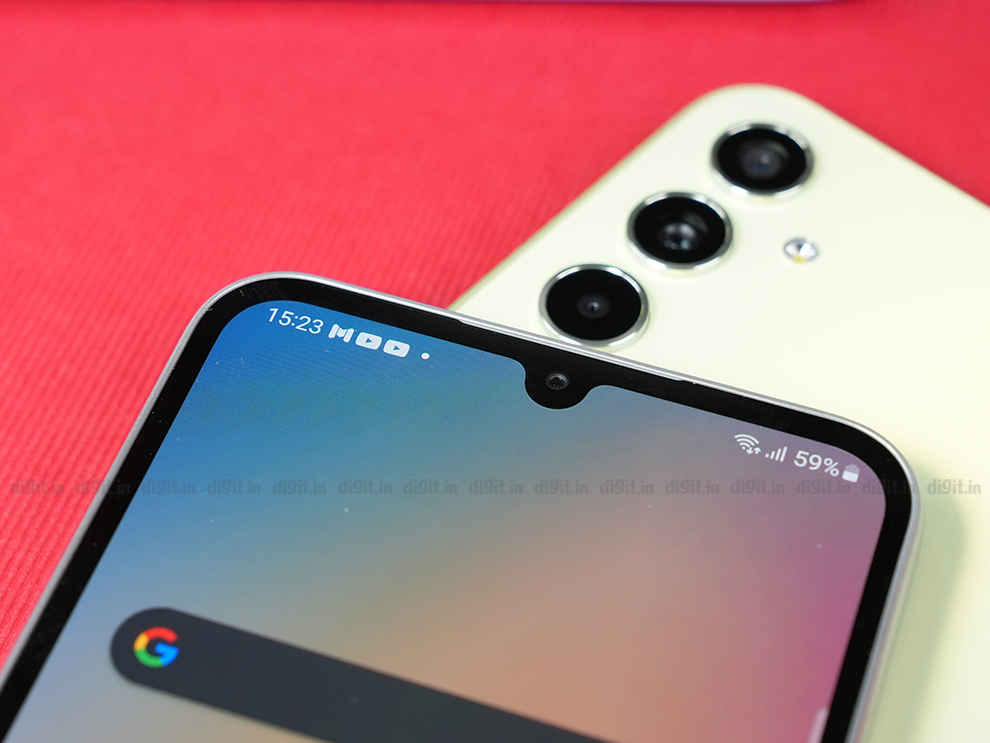
The front of the phone, however, breaks the illusion of an uber premium phone due to two primary reasons – the dated U-shaped notch and the relatively thick chin bezel. Nevertheless, these are compromises that aren’t too hard to overlook for the overall premium looks. What we couldn’t though is the slow Optical In-Display Fingerprint sensor. While accurate, the fingerprint sensor does take its sweet time to unlock the device.
Samsung Galaxy A34 5G Review: Display
While the display of the Samsung Galaxy A34 is housed in a slightly unflattering manner – due to the U-shaped notch and the thick chin bezel, the quality is top-notch. You get a 6.6-inch Super AMOLED Full HD+ display with 120 Hz refresh rate and Gorilla Glass 5 protection. However, there’s no HDR support on the display, which is disappointing since the Nothing Phone (1), Pixel 6a, iQOO Neo 7, POCO X5 Pro, and the Redmi Note 12 Pro+ come with HDR support.
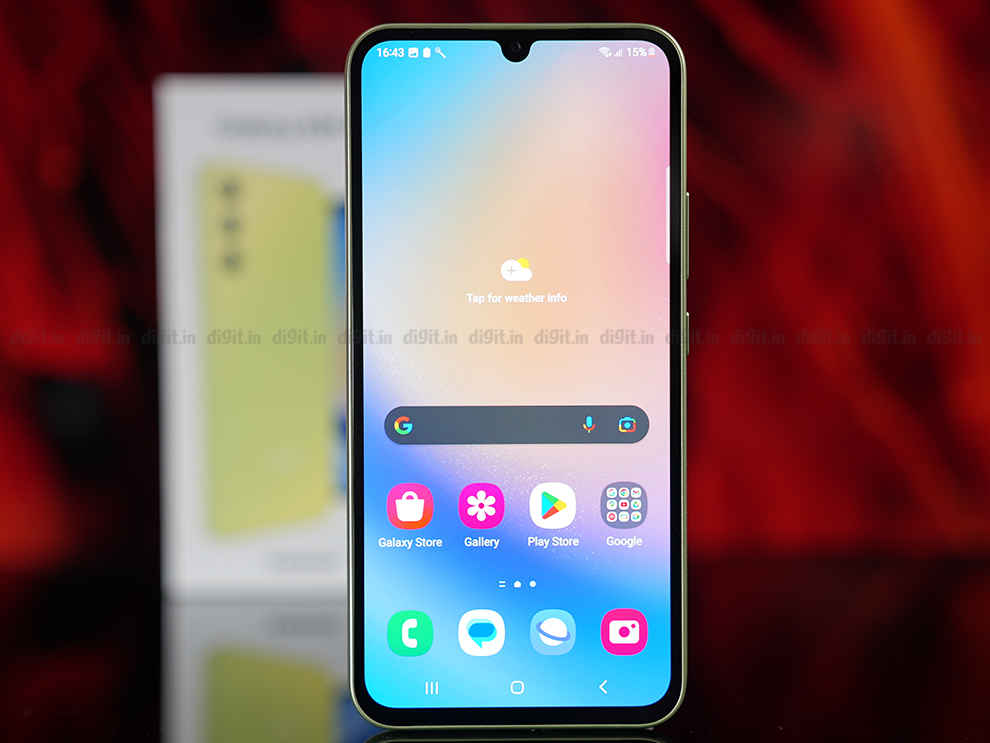
The display is an absolute stunner with vibrant, punchy colours and deep blacks – in typical Samsung fashion. The display has good clarity and viewing angles as well. However, the U-shaped notch does impact overall immersion. That aside, the Samsung Galaxy A34’s panel is extremely bright – the brightest we’ve tested in the mid-range segment. The brightness is simply unmatched at this price.
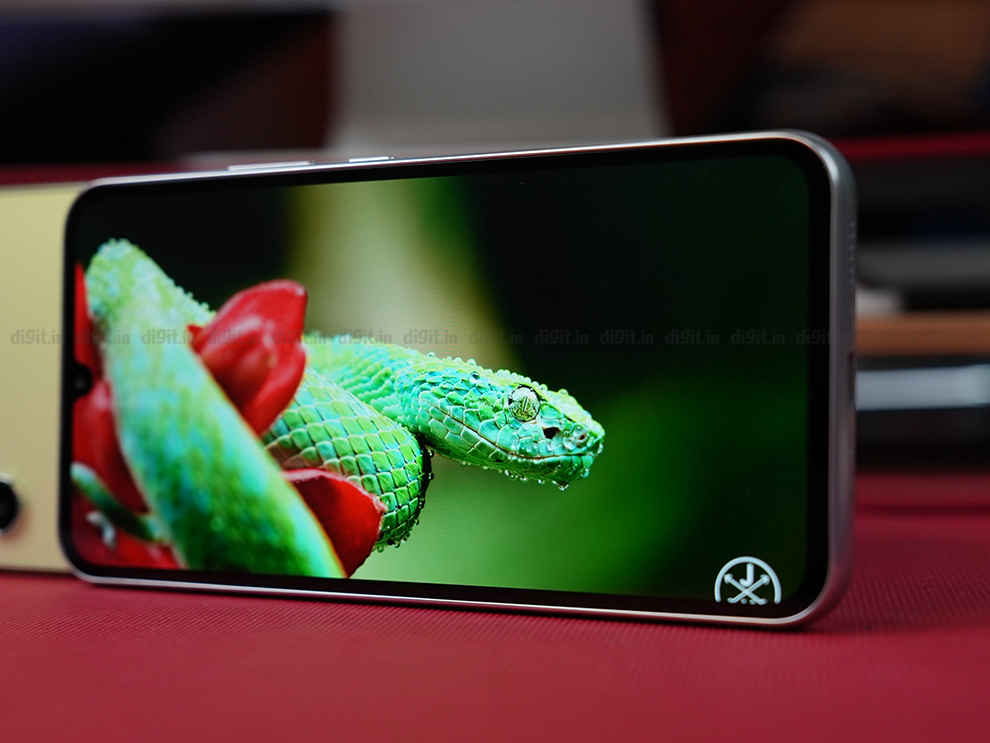
With Adaptive Brightness turned on, we recorded a whopping 1120 nits of peak brightness under sunlight. So, along with the device being bright enough for all normal situations, there will also be no legibility issues in harsh sunlight. The display supports 120 Hz refresh rate, as mentioned above, but this is not adaptive, so it is fixed to either 60 Hz or 120 Hz according to the setting applied. Overall, while the display features are light on some fronts, the crisp visuals, good viewing angles, and high brightness are enough for us to recommend this to users who consume a lot of content on their smartphones.
Samsung Galaxy A34 5G Review: Performance
Equipped with the MediaTek Dimensity 1080 6 nm SoC, the Galaxy A34 5G is definitely not packing the most powerful hardware at this price point. We’ve got phones featuring the Snapdragon 778G, and the Dimensity 8200 SoCs at a similar price. So, in general benchmarks, you can see the performance disparity. As for memory, the phone comes with 8 GB RAM and 128 GB storage along with expandable memory via microSD card.
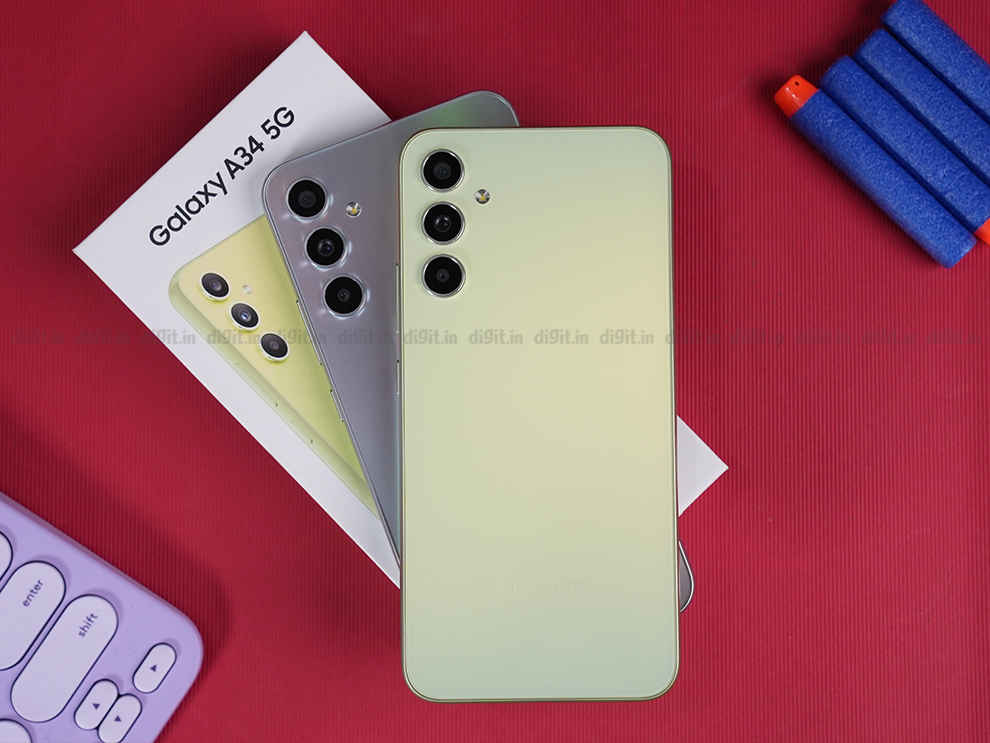
We pit the Samsung Galaxy A34 against the Nothing Phone (1), iQOO Neo 7, Pixel 6a, POCO X5 Pro, and the Redmi Note 12 Pro+ in our benchmarking tests as they’re all priced about the same, except for the POCO X5 Pro that is ₹5,000 cheaper. In AnTuTu, the Galaxy A34 only managed to beat out the Redmi Note 12 Pro+ which comes with the exact same processor, while all the other phones outshone the A34’s score. In Geek Bench 6 Single Core, while the Galaxy A34 had the best score, it lagged behind every score in the Multi Core test except the Redmi Note 12 Pro+.
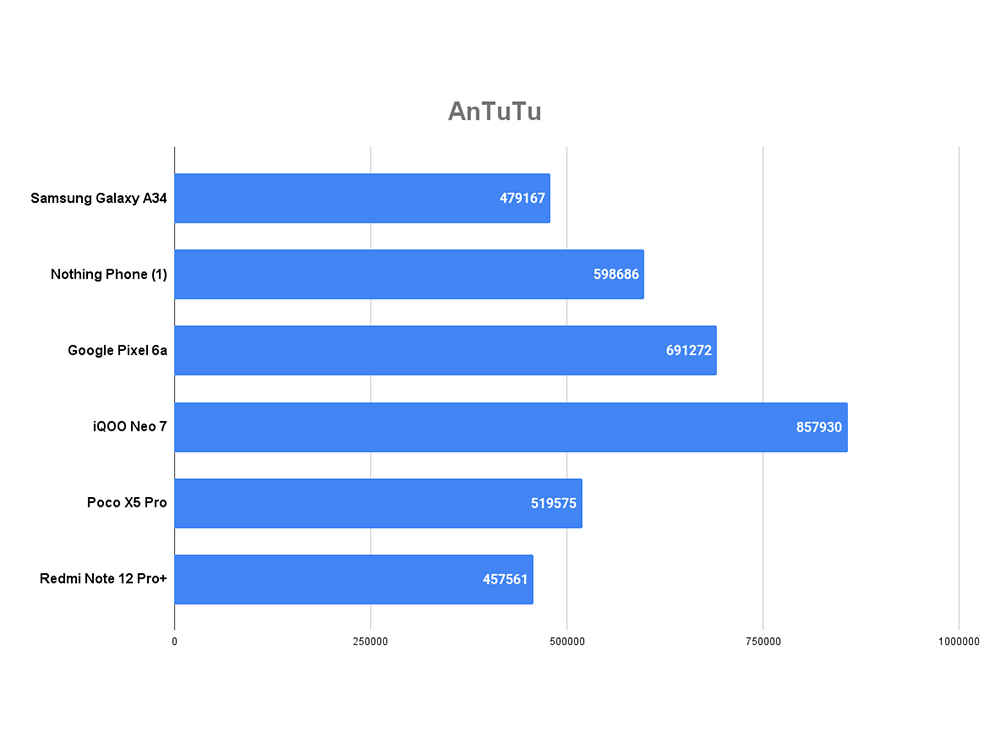
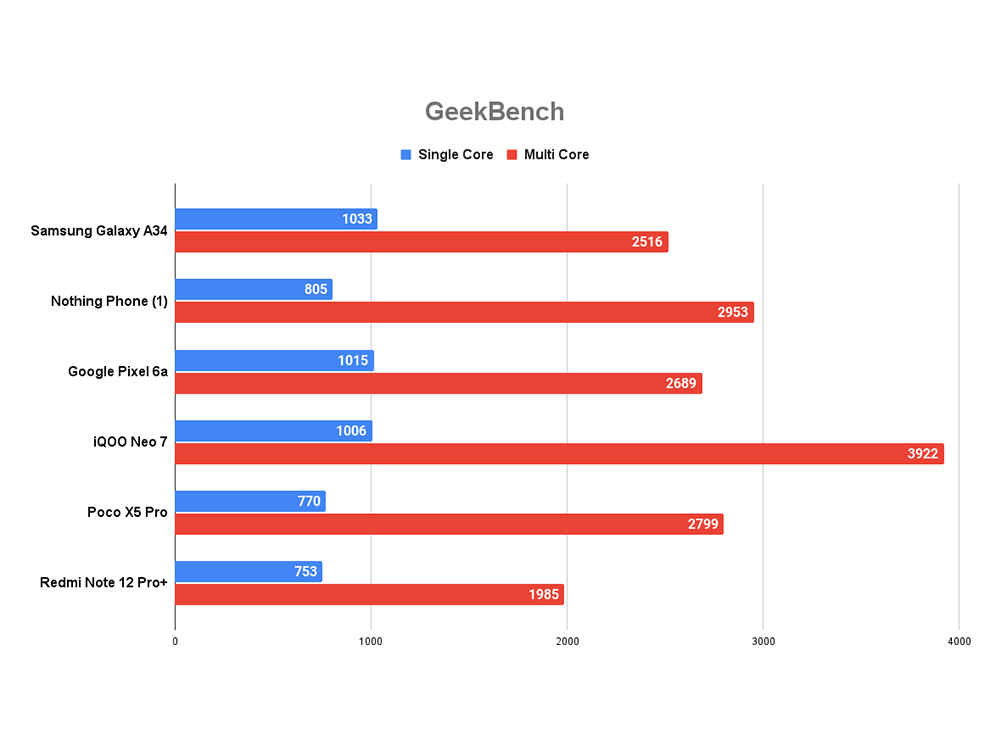
We also ran PCMark Work – which simulates real-world workflow on a smartphone – and the Galaxy A34 coughed up pretty impressive numbers here. However, in GPU benchmarks, the phone lags behind considerably in both 3D Mark Wild Life and all three tests we ran in GFXBench. The Galaxy A34’s GPU scores were the lowest among all the phones we compared it against.
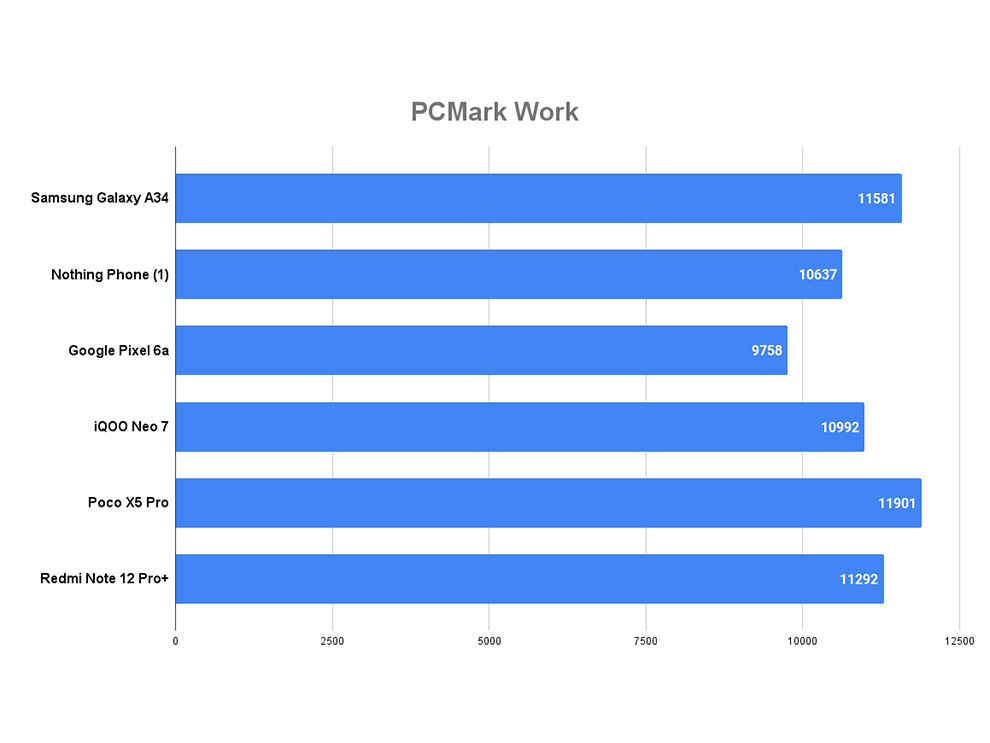
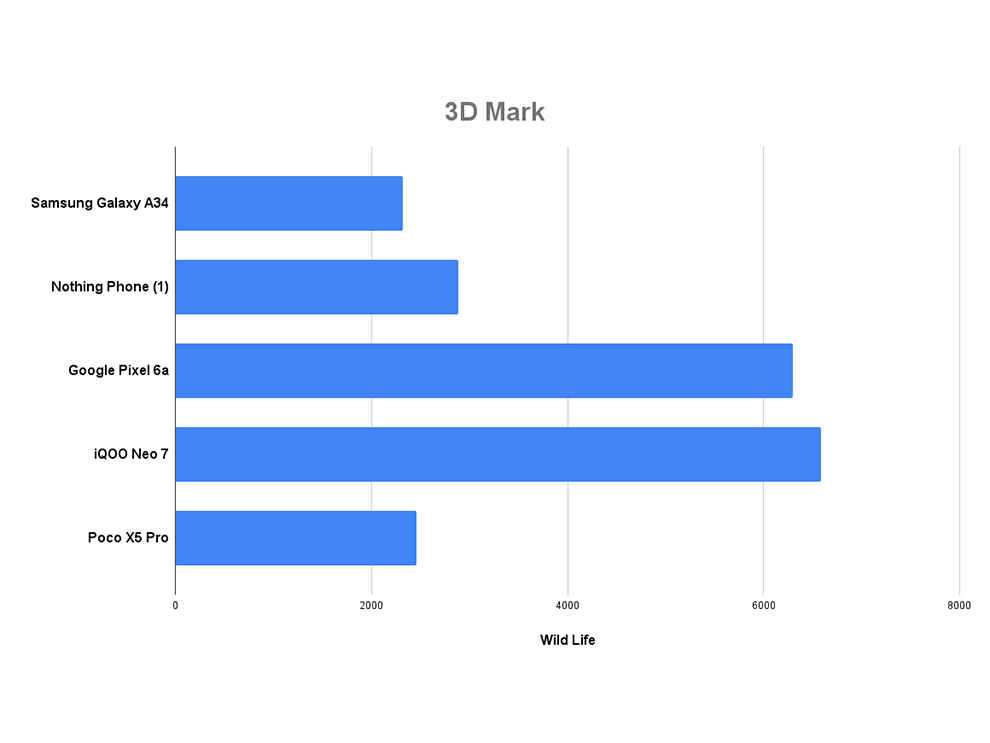
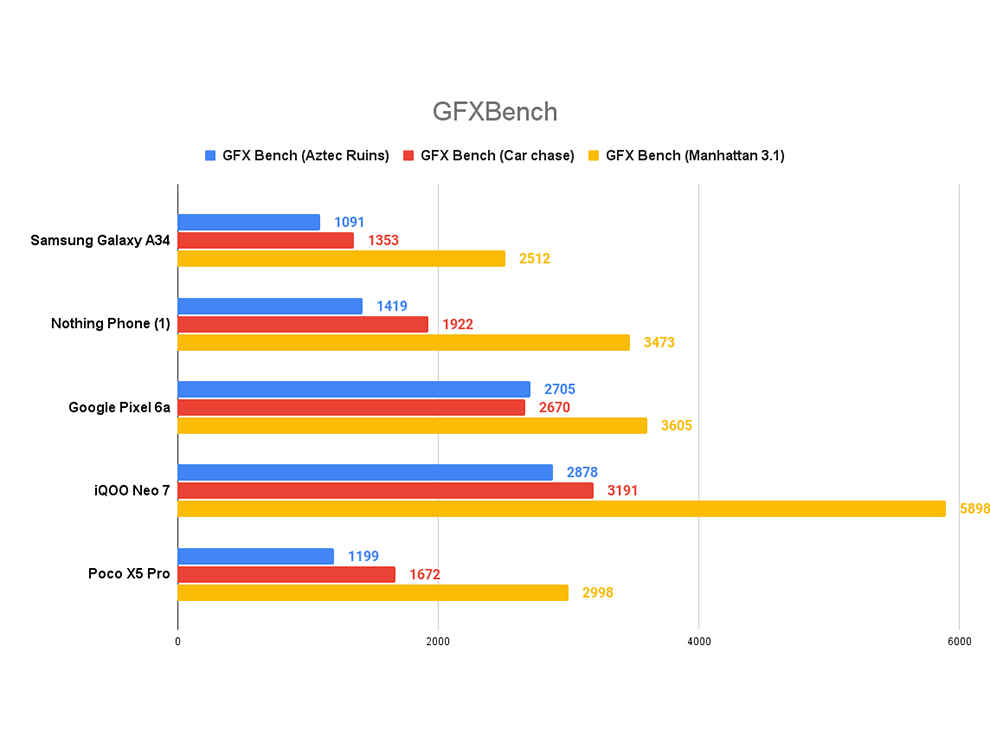
In real-world gaming though, you can play Call of Duty: Mobile at 60 fps without too many frame drops with ease, however, be sure to play such demanding games on Low or Medium graphics. If you try High or Extreme graphics, you will find that the phone will drop frames and stutter throughout your playthrough. So, in our opinion, this phone is not for avid and hardcore gamers – that honour is reserved for the iQOO Neo 7 and POCO X5 Pro – but it is reliable enough to run these games at stable frame rates if the graphics are set to a reasonable level.
However, for day-to-day usage, the phone is reliable enough. There are minimal hiccups when running basic apps and multitasking is a breeze with 8 GB of RAM. We also ran the CPU Throttling Test to discern the phone’s sustained performance through intensive workloads and it only throttled to 92 per cent of its peak performance. Overall, the phone provides dependable performance but is in no way a top performer at this price point.
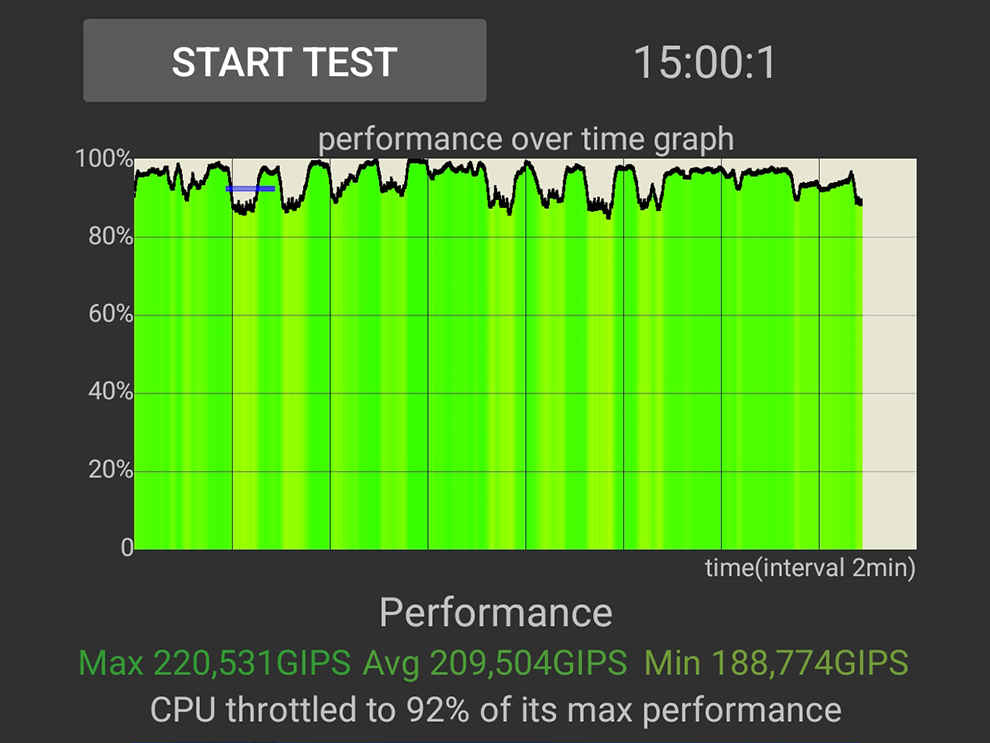
As for user experience, you’ve got One UI 5.1 with Android 13 on top. The experience is generally decent, there are quite a bit of tweaks and customisations for those who enjoy it, and the look of the UI is clean. However, there are a fair amount of third-party apps pre-installed, which can get annoying, but thankfully, most of these can be uninstalled. However, there’s a Samsung Glance feature (much like Realme’s Glance) that shows the latest news on your lock screen – which looks quite spammy. However, there’s no easy way to disable this feature. We tried for a good 5 minutes but were still unable to completely disable the “feature”.
Despite all of this, One UI is a decent software skin and generally less spammy than other ones on the market at this price. However, if you want a clean software experience, the Pixel 6a is still the very best option – there’s no competition. You do, however, get a whopping four years of OS updates and five years of guaranteed security updates with the A34, which is fantastic.
Samsung Galaxy A34 5G Review: Camera
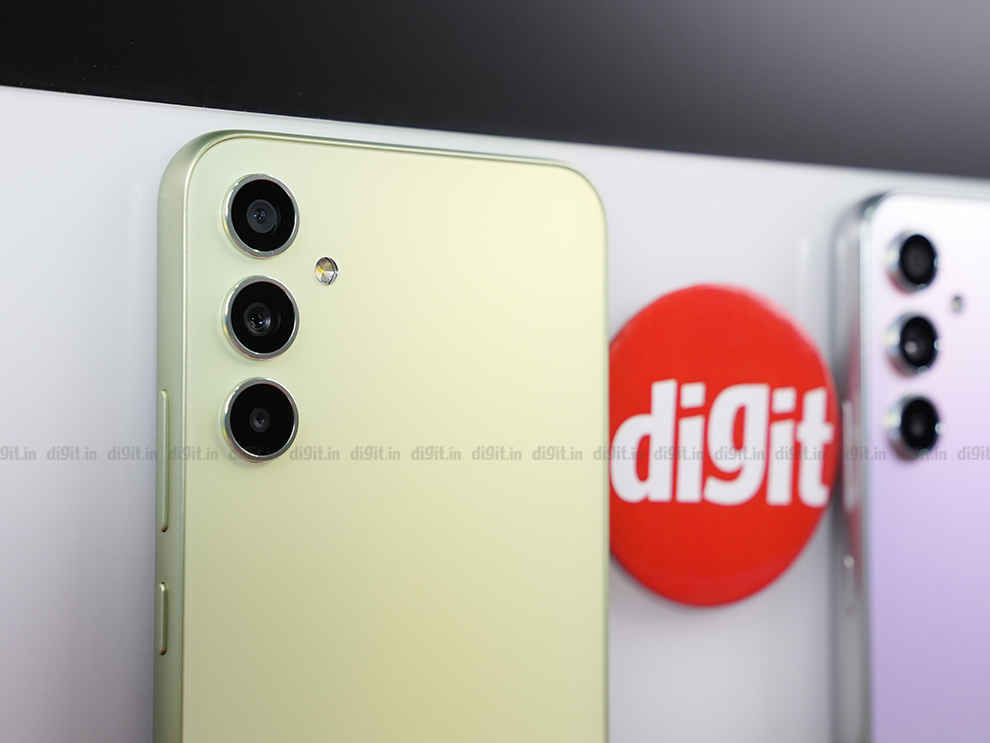
The Samsung Galaxy A34 5G features an almost identical camera setup as its predecessor, minus the 2 MP depth camera which had limited usability anyway. The phone houses a 48 MP main lens, an 8 MP ultrawide shooter, and a 5 MP macro camera. For selfies, you’ve got a 13 MP selfie shooter. The primary camera is capable of clicking detailed shots in daylight with good colour and dynamic range. There is oodles of detail in most shots you click and the primary camera is surprisingly proficient at clicking detailed shots even in tricky lighting. Here are some camera samples which have been compressed for the web:



The portrait images of this phone also look fantastic with saturated colours that may not be the most accurate but look social-media-ready. The edge detection is also great, but there are some instances where the phone may miss out on a stray hair.

Ultrawide shots look good but they aren’t as detailed as the primary lens. The dynamic range is decent but the details in the shadows do get clipped. Low-light ultrawide shots have plenty of noise and grain. Macro shots from the 5 MP lens are surprisingly decent, however, you may need a couple of tries to get the best possible shot.

Low light images from the primary lens are a substantial improvement over the shots without Night Mode active. The shots are detailed enough, have palatable levels of noise, and the colours look good even in low lighting conditions. The picture below was clicked in absolute pitch black conditions.
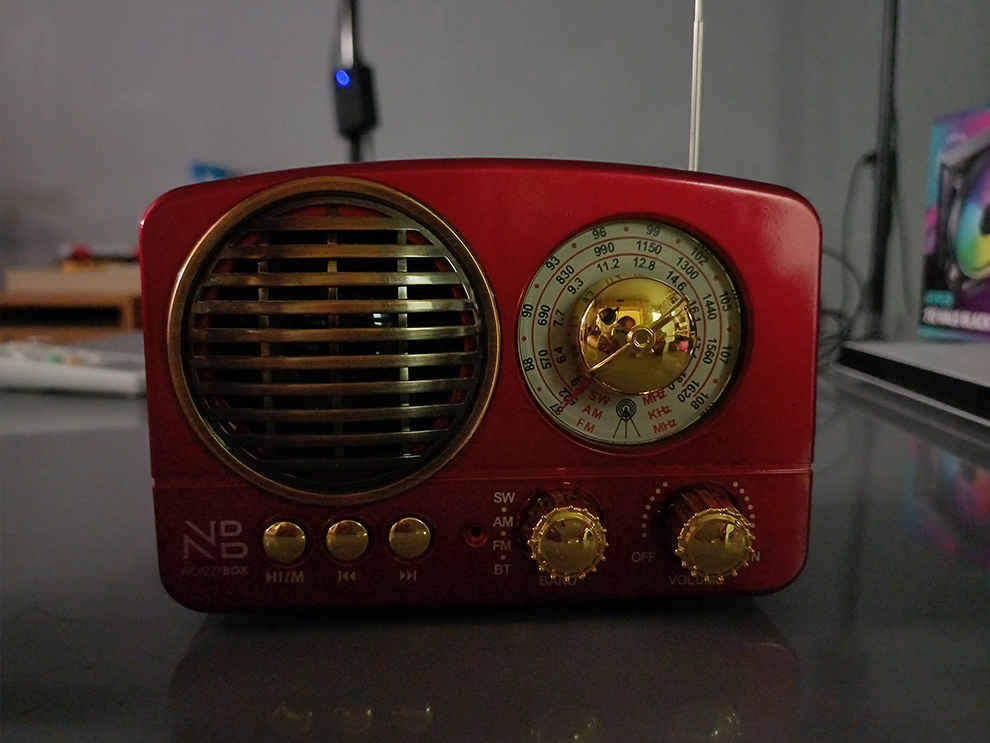
Selfies from the 13 MP camera look good in most situations, but they do get noisy in low light. Portrait selfies have fine edge detection and the colours of human skin tones seem quite natural if you turn off Beauty Mode. Video is not great at this price point. You get only 1080 p at 30 fps whereas some competitors even offer 4K. The video footage is decent in daylight but without Ultra Steady mode, there’s quite a lot of jitter.
Samsung Galaxy A34 5G Review: Battery life
The Samsung Galaxy A34 5G doesn’t improve much on battery life when compared to its predecessor. You get the same 5,000 mAh battery with the same 25 W wired charging, so it's not a huge jump in battery life. The Dimensity 1080 chipset is decently power efficient, so you can expect a day’s worth of battery life with ease if you’re a light to medium user.
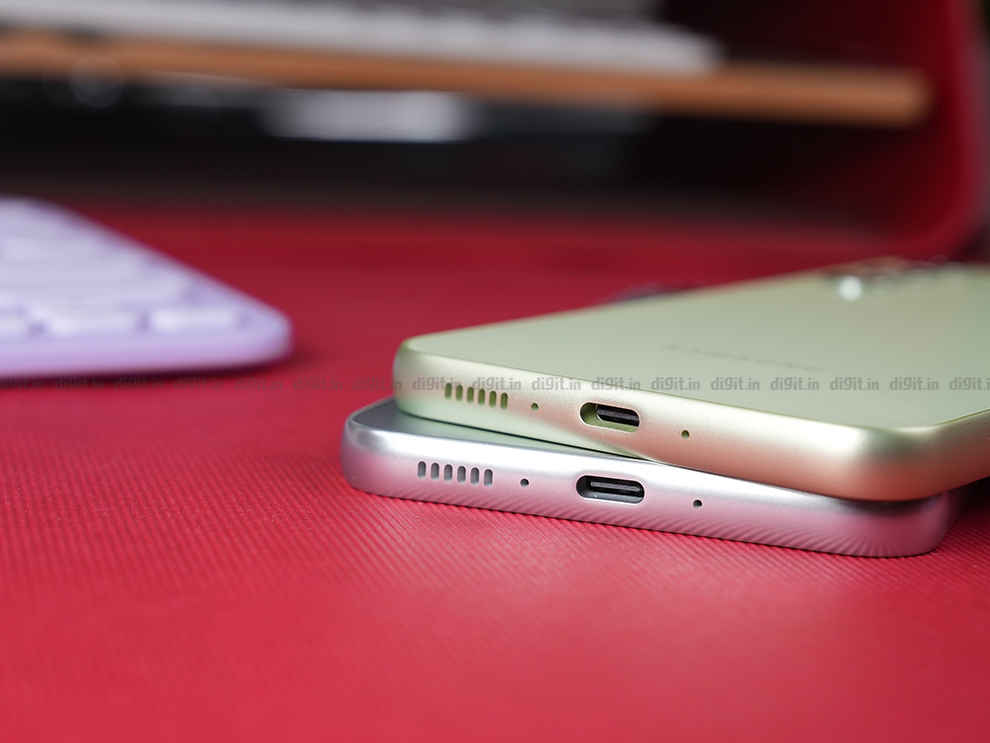
However, if you play a lot of games or watch a lot of content, you may need to top up the battery by evening. We got 13 hours and 2 minutes of battery life in our 4K video loop test, however, some phones in this price range have thrown up better numbers. During a 15-minute Call of Duty: Mobile session, the phone’s battery percentage dropped by 6 per cent (from 92% to 86%) and half an hour of Netflix dropped the battery levels by 4 per cent (from 85% to 81%). So, while the battery life is not bad at all, it is not the best in the segment.
Charging speed is also dated for 2023. At around ₹30K, you are only getting 25 W wired fast charging which tops up the phone from zero to full in over 1 and a half hours – this is laboriously slow in 2023 when phones are coming out with 100 W, 150 W and even 240 W charging that tops phones up in mere minutes to full.
Samsung Galaxy A34 5G Review: Verdict
There’s no denying the finesse of the Samsung Galaxy A34 5G – it does a couple of things well, and it generally does it better than most at this price. The key highlights of the Samsung Galaxy A34 are its gorgeous, premium design and its bright Super AMOLED display. The design is, simply put, classy. It exudes a premium air, that very few do at this price. The display, on the other hand, is simply the brightest we’ve ever tested at this price with solid viewing angles and good colour. However, there are some misses as well, where its competition takes the lead. The lack of HDR support, slow 25 W charging, and a dated U-shaped notch are some of the things that may dissuade you from picking this device up. Additionally, it is not the most powerful at this price – however, what you get is dependable enough performance with enough panache to convince most users of its mettle, especially Samsung phone lovers.
from Mobile Phones Reviews https://ift.tt/ESV48np
